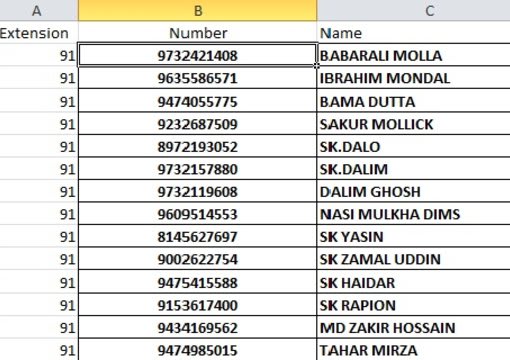

Local numbers cannot begin with 4, 5 or 6 Almost all (01xxx) area codes now have only six digit subscriber numbers, but a small number of these areas also have some subscriber numbers only five digits in length (see next section). Just short of 581 areas use this format, and the area codes range from 01200 to 01998. These area codes were changed by adding a "1" directly after the initial zero as a part of PhONEday in 1995.
Briqs phone number code#
It has a four-digit area code (after the initial zero) and a six digit subscriber number, and is known as 4+6 format. Geographic telephone numbers in the UK always have nine or ten digits after the 0 trunk code or +44 international dialling prefix.įour-digit area codes have either six-digit subscriber numbers or a mix of five- and six-digit subscriber numbers. Main article: List of dialling codes in the United Kingdom Standard geographic numbers

There are no telephone numbers in the UK with an NSN length of 8 digits. All other UK numbers have NSN length of 10 digits. The 0500 range had NSN length as 9 digits only, and was withdrawn from use on 3 June 2017. The 0845 range can have NSN length as 10 or 7 digits. The 0800 range can have NSN length as 10, 9 or 7 digits. NSN is the number of digits after the leading 0 trunk code or +44 international prefix. Number ranges starting 01 can have National Significant Number (NSN) length of 10 or (very rarely) 9 digits. Possible number formats for UK telephone numbers are: ( April 2018) ( Learn how and when to remove this template message) Unsourced material may be challenged and removed. Please help improve this article by adding citations to reliable sources. This section needs additional citations for verification. The UK Numbering Plan also applies to three British Crown dependencies – Guernsey, Jersey, and the Isle of Man – even though they are not part of the UK. The code allocated to the largest area is (028) for all of Northern Ireland. The code allocated to the largest population is ( 020) for London. The "area code" is also referred to as an " STD (code)" or a "dialling code" in the UK. The total number of digits is ten or, very rarely, nine (not including the initial zero). Local customer numbers are four to eight digits long. Regions with shorter area codes, typically large cities, permit the allocation of more telephone numbers as the local number portion has more digits. In the United Kingdom, area codes are two, three, four or, exceptionally, five digits long (after the initial zero). Toll-free services (080x), special-rate services (084x and 087x)Ī short sample of geographic numbers, set out in the officially approved ( Ofcom) number groups: Number Mobile telephony (071xx–075xx and 077xx–079xx), personal numbering (070xx), non-UK mobile networks (07624) and pagers (076xx) Non-geographic numbers charged at standard geographic area code rates (introduced in 2007)Ĭorporate numbering and VoIP services toll-free services (0500) until June 2017 Geographic area codes (introduced in 2000). The overall structure of the UK's National Numbering Plan is: Prefix

All mobile numbers, nearly all geographic numbers and nearly all non-geographic numbers have 10 national (significant) numbers after the "0" trunk code.


 0 kommentar(er)
0 kommentar(er)
